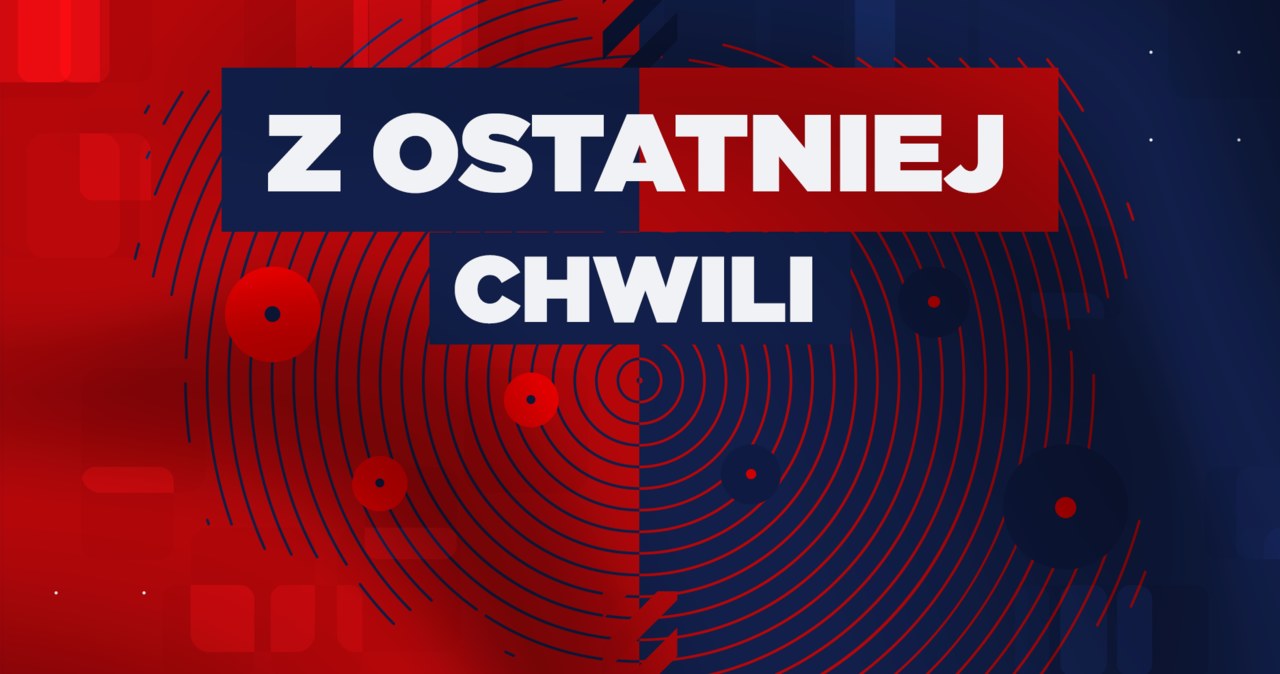How much does it truly cost to live in a country? Most Poles answer this question with a shortcut: “I gain X, I get Y on my hand.” But the difference between X and Y is just the beginning. “How much does it cost you?” published by the Warsaw Enterprise Institute shows that the real taxation burden in Poland is not only the PIT or ZUS contributions, but dozens of little visible taxes, fees and indirect taxes that charge the citizen at all turn.
According to authors' calculations, the average Pole in 2024 gave you over 43% of his gross wage – a full of about PLN 41,940 per year. It's money that disappears from wages, bills, receipts and invoices for services. According to the authors of the report:
"Statistical Pole Gets Only 72 percent of the earned money. The main indirect taxes specified as VAT, excise duties, PCC, or “Belka tax” reduce the budget of the average Pole by more than PLN 1000 each month.” (p. 4)
The article you read shows precisely where your money goes, how much of it absorbs different fiscal mechanisms and what the Warsaw Enterprise Institute says should be changed urgently.
Polish taxation strategy in a nutshell
Poland has 1 of the most complex taxation systems in Europe. Despite the comparatively low rates of PIT or CIT, the charges hidden in premiums and indirect taxes make real taxation much higher than it seems.
In the global taxation Competition Index 2024, Poland ranked 31st on 38 OECD countries surveyed. The authors of the study have no illusions:
"One hand we attract companies with low CIT taxation and global agreements, and the another we push them distant with 1 of the most complicated VAT systems and advanced labour taxation." (p. 6)
The system, which was created in the early 1990s, was expanded and modified with each decade. As a result, present we have respective different taxation rates and contributions, any of which can be deducted from the taxation base and any not. Let us add 3 different VAT rates (5%, 8%, 23%) and many exceptions, and we get a image of an unfriendly, opaque and costly strategy for both citizens and companies.
In the opinion of the WEI, an excessive complication of taxation rules leads to discouragement of investors, the improvement of the shadow economy and a decline in economical activity. According to the authors, good taxation law must be unchangeable adequate to let the payer to anticipate the consequences of his economical activities. (p. 7)
Hidden labour costs – what you take from your salary
Income taxation is just the tip of the iceberg. Before the worker receives his payment to the account, the State collects not only the PIT from his salary, but besides compulsory ZUS contributions and wellness contributions, which, since 2022, can no longer be deducted from the tax. The net real wage is much lower than the taxation rate itself.
According to the data contained in the report, the average gross remuneration in 2024 was PLN 8181.72. After deduction of all mandatory charges, the worker of the employment contract received PLN 5907.40 net, which is only 72 percent gross. So already 28 percent of the wages earned vanish in the tax-contribution system.
The burden distribution is as follows:
- ZUS contributions (chore, pension, pension): 13,71 percent gross, or PLN 1121,71
- PIT taxation (taking into account the amount of free and the cost of obtaining income): PLN 517,20
- health premium (NFZ): 9 percent of the base of dimension, i.e. PLN 635,40
As the study concludes:
“From all gold you gain gross, the state takes you an average of 28 cents before the money goes into your pocket.” (p. 10)
What's more, it's not over. erstwhile we get our "at hand", we are facing another phase of fiscal burden – indirect taxes.
Indirect taxes – invisible portfolio drainage
After receiving a net salary, it might seem that the remainder is ours. However, the real taxation burden is just beginning. regular expenses – from food purchases, through fuel, to bills and investments – are charged with dozens of hidden taxes, the most crucial of which are VAT, excise duties, Belka, PCC tax, customs and sectoral charges.
The authors of the study estimation that the average citizen lost over PLN 14 500 in 2024 – over PLN 1200 per month.
"Indirect taxes, specified as VAT, PCC, ‘Belka tax’, excise duties, local charges and many others, take up a full of around 21% of consumption income" (p. 12)
VAT, although seldom noticeable, is the largest component of this category. According to WEI calculations, the average VAT rate actually paid by the consumer is 13.8 percent. With monthly consumption of PLN 5617.94, this means as much as PLN 775 of VAT alone.
Excise is another burden, hidden in the prices of fuel, alcohol, cigarettes or energy. In 2024 the average citizen paid PLN 2408.64 for this title.
Other taxes include:
- tax of Belka – PLN 281,64 per year,
- PCC taxation – PLN 110.64 per year,
- customs work – PLN 182,64 per year,
- sectoral charges (sugar, fuel, gambling) – a full of over PLN 100 per year.
"Statistic Pole in 2024 lost over PLN 14 500 for indirect taxes" (p. 12)
These are all costs that you do not see straight on the pay bar, but which effectively deplete our income each month.
Local taxes and municipal charges – i.e. harzecz for the municipality
In addition to national taxes, all citizen besides bears the burden of local charges. The amount of these dans varies according to the place of residence, but regardless of the region – they are compulsory and have a real impact on the home budget. Contrary to appearances, these are not tiny things. A full of PLN 118.68 per period disappears from the average resident's portfolio.
"Every period a citizen pays fees to his municipality. [...] In total, it is almost PLN 119, which feeds the local budget all month, reducing the taxpayer’s income.” (p. 15)
What does this amount consist of?
- property taxation – depending on the area of the home or flat and the plot, on average PLN 10.07 per period per capita,
- waste removal – on average PLN 25 per period per person,
- water and sewage – about PLN 20 per month,
- RTV subscription – 27 PLN per period (on the presumption of 1 receiver per holding),
- local and spa fees – on average PLN 24.47 per month,
- tax on the dog – averaged up to PLN 0,50 per month,
- parking charges – on average PLN 6.97 per month,
- tax and administrative charges – about PLN 4.67.
In practice, even those who do not actively usage many public services gotta participate in the cost of backing them. The specified possession of an apartment, a tv receiver, a dog or a car involves further charges – frequently stiff, independent of income or actual consumption.
Sector and car charges – a fiscal trifle that hurts
In addition to taxes and local charges, the average citizen's life is besides little obvious, but compulsory. These are alleged sectoral taxes and various costs associated with the possession or usage of vehicles. Although they may seem tiny individually, they represent a crucial burden – on average PLN 67.23 per person.
Sectoral charges include:
- sugar taxation – charged on beverages containing sugar, caffeine or taurine. The average yearly cost for the citizen is PLN 40.70,
- fuel and emanation charge – included in the price of each litre of fuel, full 0.28 PLN/l. Annually on average PLN 56.16,
- tax on games and gambling – PLN 11,11 per year.
This gives about PLN 19.13 per month.
Additionally, car owners will not avoid:
- OC insurance – mandatory, average cost in 2024 is PLN 1550 per year, which translates into PLN 38.62 per period per capita,
- technical review – erstwhile a year, average PLN 98, or PLN 5.82 per month,
- registration of the vehicle – one-off cost 160 PLN, averaged to 0,20 PLN per month,
- re-registration of the vehicle – cost 100 PLN, distributed into the population: 0,12 PLN,
- business car taxation – PLN 3.33 per month.
“Even if we usage a service car, we will pay a taxation on it anyway, most frequently it is PLN 400 each month.” (p. 19)
The full cost of utilizing the car is PLN 48.10 per month.
It is worth noting that many of these charges apply indirectly to all citizens. Even those who do not have a car or drink sweetened beverages frequently pay higher prices due to costs passed on to consumers by producers and service providers.
Summary of real taxation – how much it truly takes
A summary of all mandatory danes – those visible in the wage bar and those hidden in the prices of products, services, local or sectoral charges – leads to 1 conclusion: real taxation of the average Pole's income is 43 percent. This is much more than the PIT itself, which is formally 12 percent on average earnings.
“Almost half of the money that the employer spends on pay for the worker never goes into his pocket.” (p. 22)
The WEI study details the components of this charge based on the average gross remuneration in 2024 (PLN 8181.72). After deduction of ZUS, PIT and wellness contributions, there is PLN 5907.40 net. Of this amount, according to consumption, savings and inflation indices, about PLN 5617.94 is spent. And from the amount spent, the state takes another large part.
The authors' calculations show:
- ZUS, PIT, NFZ: PLN 2274,32
- Indirect taxes: PLN 1023.91
- local fees: PLN 118,68
- car charges: 48,10 zł
- Sector taxes: PLN 19.13
- loss of real value of savings by inflation: PLN 10,42
Total monthly burden: PLN 3494.55
Gross wage share: 43 percent
It's not just a financial cost. It is besides a cost of time that needs to be spent on accounting, bureaucracy, tracking the changing rules. There is besides uncertainty and difficulty in planning the home or company budget.
"The taxation strategy is light against Europe. This is simply a clear signal to change.” (p. 26)
ECI improvement proposals – simplicity alternatively of maze
The Warsaw Enterprise Institute is not limited to criticism. In the final part of the report, it presents a concrete alternative: a simplified, more transparent and little oppressive taxation system. The proposed changes do not mean a drastic simplification in budget revenue, but a shift from complexity and control to efficiency and understanding.
"We are in favour of simplifying the strategy by replacing it with taxes in a modified form" (p. 25)
The WEI proposes a complete overhaul of the labour, business and consumption taxation system. These are the key assumptions of their reform:
- one wage tribute – 23,5 percent of the wage fund, alternatively of separately ZUS, PIT and NFZ,
- flat rates for single-person activities and tiny companies – 1.5 to 17 percent, on average 10 percent,
- uniform rate of VAT – 17.75 percent plus 2 percent on reinforcements (total 19.75), alternatively of present 5, 8 and 23 percent,
- income taxation for financial institutions – 0.5 percent, and 1.5 percent for companies,
- uniform dividend taxation – 23,5 percent.
In addition, WEI calls for the elimination of tiny and costly fees, specified as:
- tax on the dog,
- local and spa charges,
- PCC (tax on civilian law).
“We see no reason why food in the premises should be charged higher than food purchased in the store.” (p. 26)
According to authors, simplifying the strategy will not only reduce fiscal pressure, but besides increase the efficiency of taxation recovery, reduce the grey region and unlock the possible of entrepreneurship.
Conclusions and final reflection – a strategy for repair
The “How much is it for you?” study clearly states: the real cost of maintaining the state by the citizen is much higher than the PIT itself. full taxation and toll charges amount to 43 percent of the gross average wage. It's not just a number – it's a circumstantial fewer 100 zlotys a period that could power a home budget, but vanish in the system.
WEI leaves no illusions: today's taxation model is Regulated, inconsistent and opaque. At the same time, it fails in the most crucial task – it does not supply adequate quality public services in exchange for the money that you are taking from your citizens.
"The real taxation burden of the average Pole is about 43 percent [...] This is simply a clear signal to change.” (p. 26)
Instead of imposing further tributes, the report's authors call for:
- simplification of the taxation system,
- the elimination of low-budget charges,
- improving the recovery of existing taxes,
- greater discipline in public spending.
This approach is based on the presumption that transparency and fairness in the taxation strategy build public assurance and long-term are more profitable than fiscal ad hoc tricks.
"The settlement of taxes for citizens and entrepreneurs should only be a formality" (p. 26)
Finally, the question remains: is specified a strategy possible? Yes – but it requires political courage, trust in citizens and willingness to talk honestly about it, how much we can afford and how much we can't afford.








![Okradli NFZ na grube miliony. Luksus na koszt podatnika [FILM]](https://static2.kronikatygodnia.pl/data/articles/xga-4x3-okradli-nfz-na-grube-miliony-luksus-na-koszt-podatnika-film-1753944276.png)




![BRZESKO. Mundurowi z powiatu brzeskiego celebrowali Święto Policji [ZDJĘCIA]](https://bochniazbliska.pl/wp-content/uploads/2025/07/8-15.jpg)